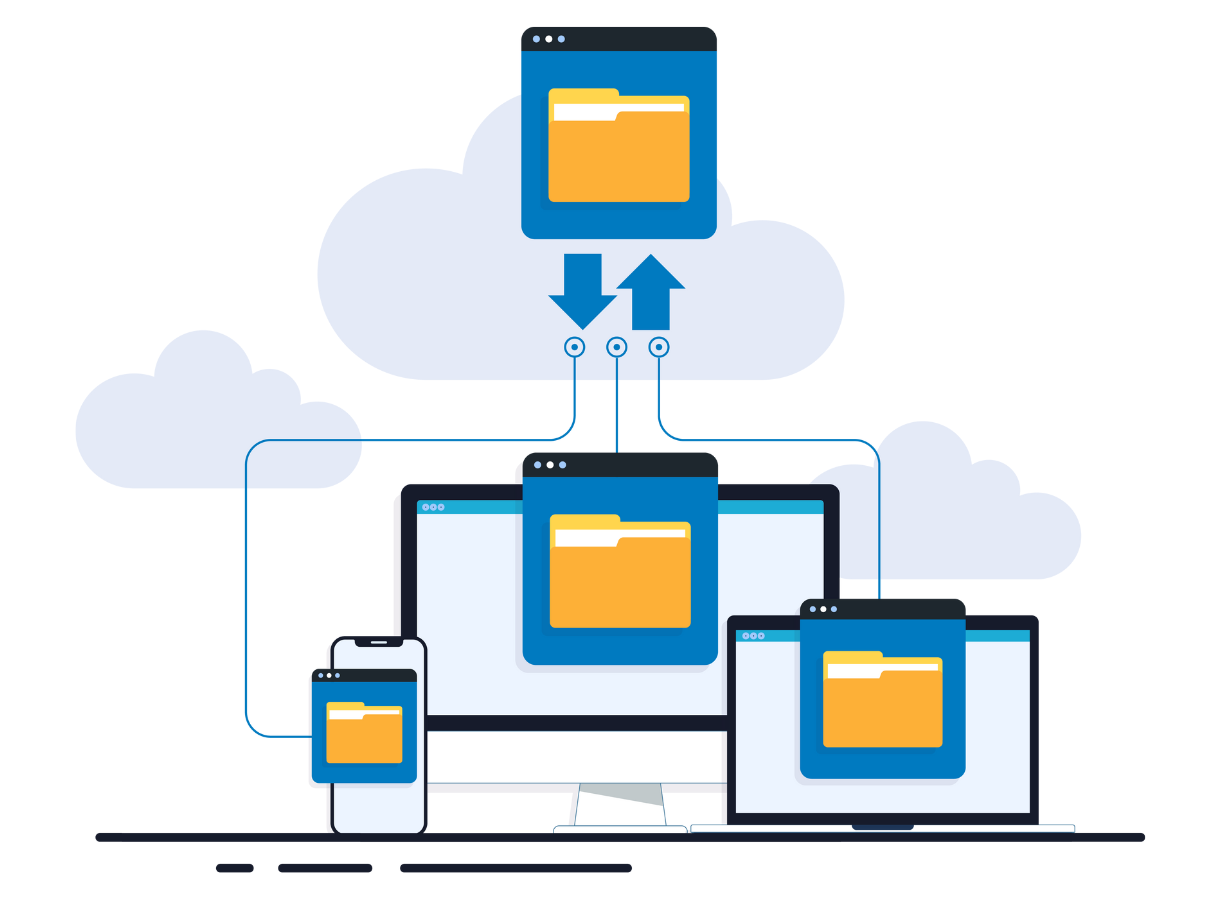In an information age of cloud storage and remote collaboration, we tend to take our access to date for granted. Unfortunately, that level of accessibility is exactly what leaves businesses prone to issues– system failures, phishing and malware, and physical damage can cause sudden and catastrophic problems for companies that do any degree of business online.
Data backed up in the cloud isn’t necessarily safe, and some backup methods are more secure than others. It’s important to understand what constitutes a “good” backup system, how to proactively protect your data, and what to do if your backups fall short.
Let’s start with a sobering reality: having backups stored haphazardly or accessible to malicious actors is akin to locking your front door but leaving the windows wide open. While it may give you a false sense of security, it’s not enough to thwart determined threats. Whether it’s multiple backups stored in one physical location or backups susceptible to phishing attacks and malware infiltration, the risks are manifold.
What Threatens Backed Up Data?
Bad agents–that is, anyone looking to steal or corrupt your data– have a variety of tactics to get into your system. “Phishing” is the act of attempting to get sensitive data simply by asking for it. Hackers will often impersonate other employees or vendor representatives and request login or payment info. With the right login info, these hackers can easily access your data– no brute forcing or technical expertise necessary to even gain entry. Of course, this puts your data at risk of deletion, theft, and corruption.
“Malware” meanwhile, is software used to manipulate or damage computer systems. It could be a program that simply renders a computer useless. It could also damage entire networks of computers. Businesses backing their data up across a series of virtual machines could see malware corrupt all that valuable data nearly instantaneously.
Of course, employees wouldn’t purposefully choose to download or run malware. That’s why malware is often used in tandem with phishing– seemingly innocuous emails are sent with the intention of getting employees to click on links or run this software.
While we often think of the digital threats, there are also much simpler issues that could render your data useless. Flooding, fires, and storm damage could completely destroy physical servers. While it’s impossible to predict or fully protect against natural disasters, backing your data up across physical (and digital) locations will ensure these problems don’t wipe out everything.
What is a GOOD Backup Strategy?
So, what constitutes a “good” backup strategy? First and foremost, redundancy is key. Backups should be stored in multiple locations – both onsite and offsite – to mitigate the risk of a single point of failure. Cloud-based backups offer an extra layer of security, ensuring your data remains accessible even if your physical systems are compromised. Regular testing of backups is also essential to identify and address any vulnerabilities before disaster strikes.
Despite your best efforts, there may come a time when your backups are rendered useless. Perhaps they’ve fallen victim to a sophisticated cyberattack or succumbed to the forces of nature. In such scenarios, having a contingency plan is paramount. Whether it’s leveraging data recovery services or rebuilding your systems from scratch, swift and decisive action can mean the difference between a minor inconvenience and a full-blown catastrophe.
Having backups is non-negotiable in today’s digital landscape. However, simply having backups is not enough – they must be robust, redundant, and resilient to withstand the myriad threats lurking in the shadows. By following best practices, staying vigilant against emerging threats, and having a solid contingency plan in place, you can ensure that your backups are more than just a safety net – they’re a lifeline in times of crisis.

